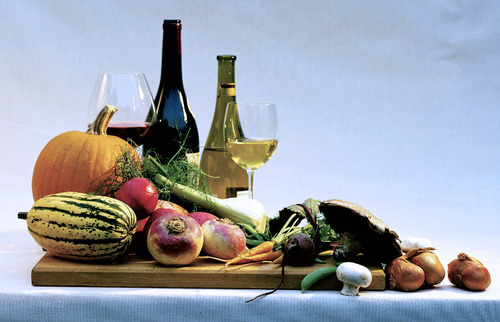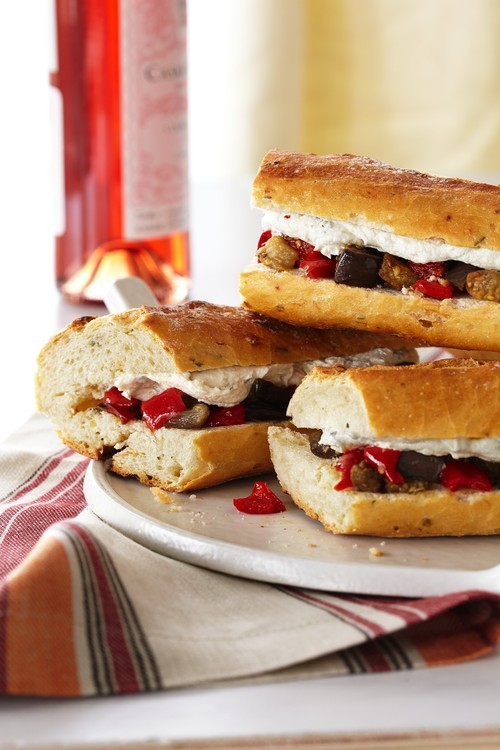
Ever had one of those dinner parties where you discover one of the guests is vegetarian after they’ve arrived and your “grand plan” of wine pairing goes right out the door? Vegetarianism is becoming more common and it should not get in the way of selecting the perfect wines. For Veggie week, we decided to interview well-known cookbook author Jill Silverman Hough.
Jill is a noted food & wine writer and has been published in Bon Appétit, Cooking Light, Fine Cooking, Clean Eating, Napa Sonoma, and a number of other prominent magazines. Her cookbooks, “100 Perfect Pairings: Small Plates to Enjoy with Wines You Love” and “100 Perfect Pairings: Main Dishes to Enjoy with Wines You Love” make wine pairing easy and fun for just about anyone. “A recipe doesn’t have to be complicated to be indulgent,” she says. And it’s this mantra that she applies when pairing wine with her food.
Pairing wines with vegetarian dishes need not be intimidating or confusing. Selecting wines for vegetarian food is no different than selecting wines for any other food. While there is general agreement among wine experts on the phenomena of wine tasting, there is always room for interpretation. When pairing wine with Vegetarian or vegan food, always remember to base your selections on the “broad characteristics” of the wine: the sweetness, crispness, acidity and tannins. Jill suggests pairing “like with like” when it comes to selecting wine for a meal.
For example, an acidic Sauvignon Blanc is considered a perfect pairing for a salad with an acidic vinaigrette dressing. A hearty risotto with wild mushrooms and a rich cream sauce could easily be paired with almost any red wine. And a buttery Chardonnay would be perfect with a buttery, creamy cheese like Brie.
Vegetarian cuisine is quiet international and complex. Jill points out that it’s best to always look for the dominant characteristics or flavors of the dish. Whether the flavors originate from vegetables, herbs or sauce, the ingredients that stand out are the ones that you should focus on when selecting a wine.
We asked Jill to share her favorite vegetarian dish and wine pairing and she was gracious enough to share her recipe for Roasted Vegetable and Goat Cheese Sandwiches, paired with a Rosé.
Roasted Vegetable and Goat Cheese Sandwich Recipe
From the Rosé chapter of “100 Perfect Pairings: Main Dishes to Enjoy with Wines You Love” by Jill Silverman Hough (Wiley, 2011)
This sandwich would be great for a picnic because you can prepare it in advance without worrying about the fillings making the bread soggy. Plus, the summery flavors are perfect for a warm afternoon, accompanied, of course, by ideal-for-warm-weather Rosé.
Serves 6
Ingredients
- 2 pounds eggplant, cut into 1/2-inch dice (you should have about 9 cups)
- 2 red bell peppers, cored, seeded, and cut into 1/2-inch dice
- 1/4 cup extra virgin olive oil
- 2 teaspoons coarse kosher salt
- 1/2 teaspoon freshly ground black pepper
- 1 1/2 cups chèvre (spreadable goat cheese) (about 12 ounces)
- 2 tablespoons fresh lemon juice
- 1 tablespoon chopped fresh marjoram (see below)
- 1/4 teaspoon dried crushed red pepper flakes
- 6 crusty seeded sandwich rolls, split horizontally
Directions
- Preheat the oven to 375°F.
- In a large bowl, combine the eggplant, bell peppers, olive oil, salt, and black pepper, tossing to coat. Arrange the mixture in a single layer on 2 rimmed baking sheets and roast until the vegetables are tender, about 30 minutes.
- Meanwhile, in a medium bowl, combine the cheese, lemon juice, marjoram, and red pepper flakes. (You can prepare the eggplant and cheese mixtures up to 2 days in advance, storing them covered in the refrigerator. Return them to room temperature before proceeding.)
- Remove the soft bread from the bottom halves of the rolls, making a cavity in each half for the eggplant mixture. Fill the cavities with the eggplant mixture, dividing it evenly, pressing it in and mounding it over the cavities. Spread the cheese mixture on the bready side of the top halves of the rolls, dividing it evenly. Place the top halves of the rolls on the bottom halves. Serve warm or room temperature.
- NOTE Fresh marjoram is available in the produce section of many supermarkets. Besides using it in this recipe, you can use it in soups, stews, salad dressings, and almost any place that you’d use fresh oregano. If you can’t find fresh marjoram, substitute equal parts fresh oregano and fresh sage.
Copyright © 2013. Jill Silverman Hough. All rights reserved.



Hence perhaps the easiest definition of natural wine: if you are stocked at the aforementioned Paris establishments, or demonstrably make wine much like the Baacco The Community Based Wine Marketplace who are, you're making natural wine.
ReplyDelete